- About MAA
- Membership
- MAA Publications
- Periodicals
- Blogs
- MAA Book Series
- MAA Press (an imprint of the AMS)
- MAA Notes
- MAA Reviews
- Mathematical Communication
- Information for Libraries
- Author Resources
- Advertise with MAA
- Meetings
- Competitions
- Programs
- Communities
- MAA Sections
- SIGMAA
- MAA Connect
- Students
- MAA Awards
- Awards Booklets
- Writing Awards
- Teaching Awards
- Service Awards
- Research Awards
- Lecture Awards
- Putnam Competition Individual and Team Winners
- D. E. Shaw Group AMC 8 Awards & Certificates
- Maryam Mirzakhani AMC 10 A Awards & Certificates
- Two Sigma AMC 10 B Awards & Certificates
- Jane Street AMC 12 A Awards & Certificates
- Akamai AMC 12 B Awards & Certificates
- High School Teachers
- News
You are here
Who's That Mathematician? Paul R. Halmos Collection - Page 52
For more information about Paul R. Halmos (1916-2006) and about the Paul R. Halmos Photograph Collection, please see the introduction to this article on page 1. A new page featuring six photographs will be posted at the start of each week during 2012 and early 2013.
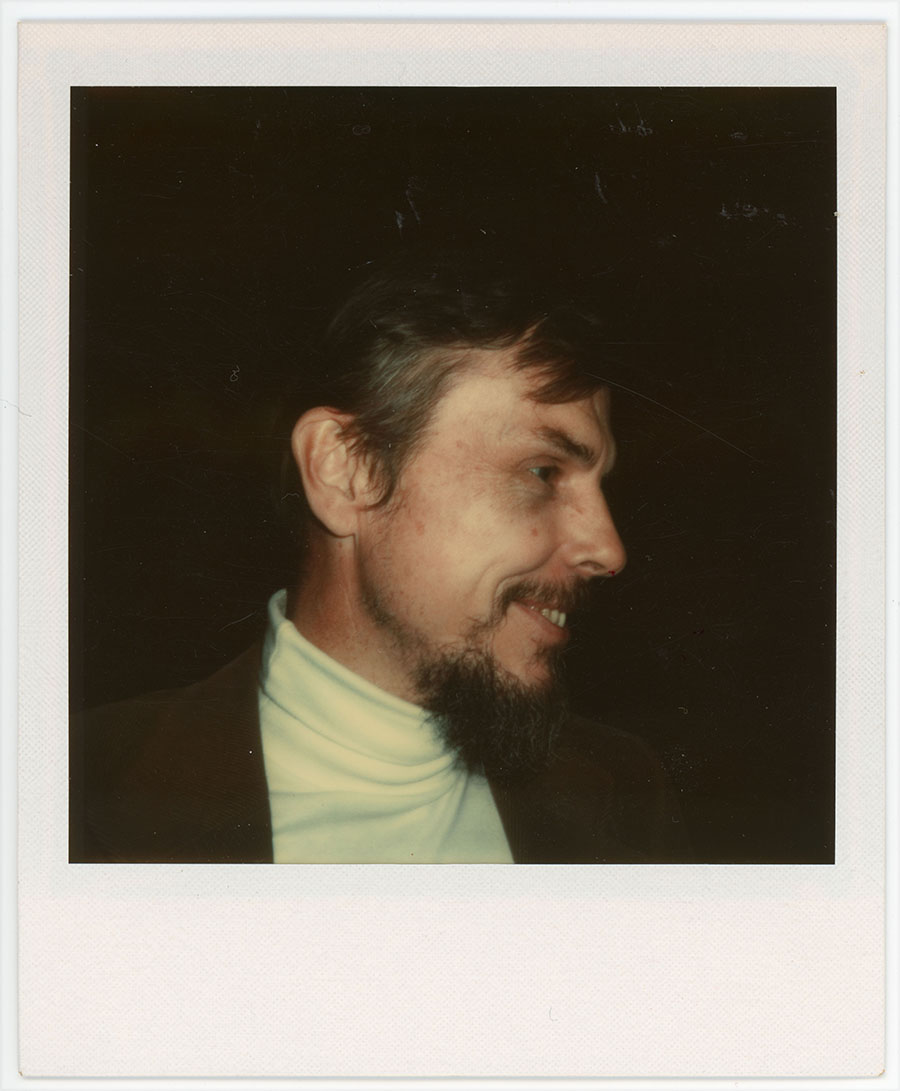
Halmos photographed John Tate, Jr., at the AMS Hilbert Problems Conference, on May 13, 1974, in DeKalb, Illinois. After studying physics and mathematics as an undergraduate at Harvard and entering Princeton in order to study for a Ph.D. in physics, Tate finally realized that mathematics and, in particular, number theory was the field for him. Beginning with his Ph.D. dissertation, “Fourier Analysis in Number Fields and [Erich] Hecke’s Zeta Functions,” written under advisor Emil Artin, he has introduced new tools and ideas into number theory, algebra, and algebraic geometry throughout his career. For his accomplishments at the beginning of his career, he was awarded the AMS Cole Prize in Number Theory (1952) and, much more recently, he was awarded the Abel Prize (2010)
… for his vast and lasting impact on the theory of numbers. … Many of the major lines of research in algebraic number theory and arithmetic geometry are only possible because of the incisive contributions and illuminating insights of John Tate. (President of Norwegian Academy and Abel Prize Committee quoted by O’Connor and Robertson of the MacTutor Archive)
Tate was on the faculty at Princeton from 1950 to 1953, at Columbia during 1953-54, and at Harvard from 1954 to 1990. He held one of the Richardson Regents Chairs at the University of Texas at Austin from 1990 to 2009, and is now Professor Emeritus at UT Austin. (Sources: MacTutor Archive, Abel Prize)
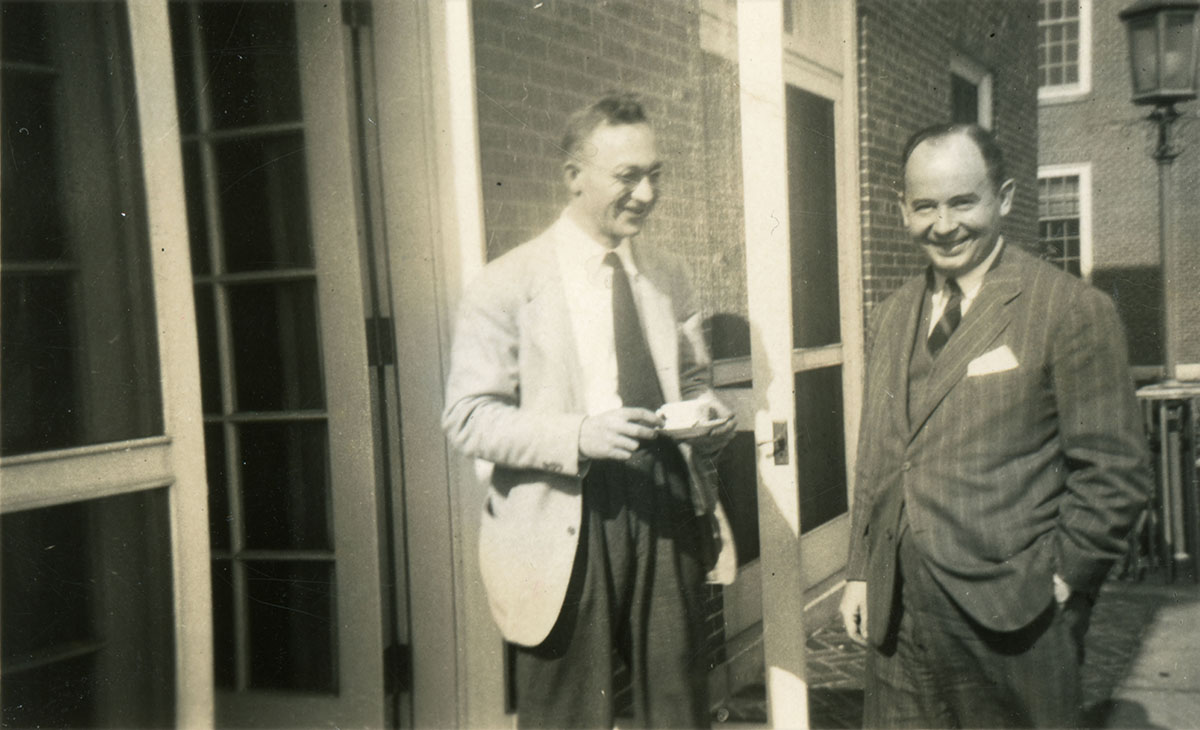
Abraham Taub (1911-1999), left, and John von Neumann (1903-1957) were photographed by Halmos in 1948, probably at the Institute for Advanced Study (IAS) in Princeton, as all three were based there during 1947-48. Von Neumann was at Princeton from 1930 onward and at IAS from its founding in 1933 onward. Taub was at Princeton as a graduate student from 1931 to 1935 and as a theoretical physicist doing war work from 1942 to 1945, and at IAS during 1935-36, 1940-41, 1947-48, and 1962-63. Halmos was at IAS from 1939 to 1942 as well as during 1947-48. He had arrived in 1939 without a fellowship but received one after submitting his careful notes on von Neumann’s lectures on operator algebras to von Neumann, and in fact was von Neumann’s assistant during 1940-42.
Abraham Taub earned his Ph.D. in 1935 from Princeton University with the dissertation “Quantum Equations in Cosmological Spaces,” written under Howard Percy Robertson. At the same time, he worked with Oswald Veblen on differential geometry; in fact, his first published paper was with Veblen on the projective differentiation of spinors (1934). His second paper was with Veblen and von Neumann on the Dirac equation in projective relativity and his third paper on the Dirac equation in Robertson’s cosmological spaces (1937). When he returned to Princeton in 1942 to do war work, he studied shock waves and, after the war, relativistic hydrodynamics, both of which led to his interest in numerical analysis and computer science. In 1948, he joined the team at the University of Illinois building the ORDVAC and ILLIAC computers from von Neumann’s plans. He was a professor at the University of Washington in Seattle from the late 1930s to 1948, at the University of Illinois from 1948 to 1964, and at the University of California, Berkeley, from 1964 onward. (Sources: Society for Industrial and Applied Mathematics (SIAM) Memorial, Mathematics Genealogy Project, IAS)
John von Neumann’s genius, especially in mathematics, was apparent from an early age. Born and raised in Budapest, Hungary, he studied chemistry at the University of Berlin from 1921 to 1923 and at Eidgenössische Technische Hochschule (ETH) in Zürich, where he also studied mathematics with Hermann Weyl and George Pólya, from 1923 to 1926. In 1926, von Neumann earned a diploma in chemical engineering from ETH and a doctorate in mathematics from the University of Budapest, the latter with a dissertation on set theory written under Lipót Fejér. His interest in set theory led also to results in measure theory and his grounding and interest in physics to his construction of a mathematical framework for quantum mechanics. His interests in ergodic theory and quantum mechanics, in turn, led to his development of the operator algebras now known as von Neumann algebras. At the same time, he made advances in partial differential equations, game theory, and, of course, applied physics and especially development of the hydrogen bomb. During the 1940s, he also built computers and, during the 1950s, worked on automata theory.
Where did von Neumann do all of this work? During 1926-27, he studied with David Hilbert at Göttingen University; from 1926 to 1929, he lectured at the universities of Berlin and Hamburg; from 1930 to 1933, he was on the faculty at Princeton University; and, in 1933, he became a founding faculty member at the Institute for Advanced Study, where he remained for the rest of his career and life. Von Neumann was president of the American Mathematical Society during 1951-52. (Sources: MacTutor Archive, Mathematics Genealogy Project, AMS Presidents)

Halmos photographed Olga Taussky-Todd (1906-1995) in 1959. Olga Taussky grew up in Vienna and Linz, Austria, and earned her Ph.D. from the University of Vienna in 1930 with a dissertation on algebraic number fields. In 1931, Richard Courant (for a photograph of Courant, see page 10 of this collection, where you can read more about him) invited Taussky to the University of Göttingen, where she helped edit works of David Hilbert and Emil Artin and worked with Emmy Noether on class field theory and Courant himself on differential equations. In 1935, she moved to England, where she worked on group theory and on matrices, the latter with John “Jack” Todd, whom she married in 1938. During 1943-46, Taussky-Todd did war work on aerodynamics, which opened up at least two new mathematical fields for her:
For the first time I realised the beauty of research on differential equations – something that my former boss, Professor Courant, had not been able to instil in me. Secondly I learned a lot of matrix theory. (Taussky-Todd, as quoted by O’Connor and Robertson of the MacTutor Archive)
In 1947, she moved to the U.S., where she worked at the National Bureau of Standards, primarily on numerical analysis and its computer implementation, and then, from 1957 onward, at the California Institute of Technology. At Caltech, she pursued all of her mathematical interests, but primarily the one for which she is best known, matrix theory. (Source: MacTutor Archive)
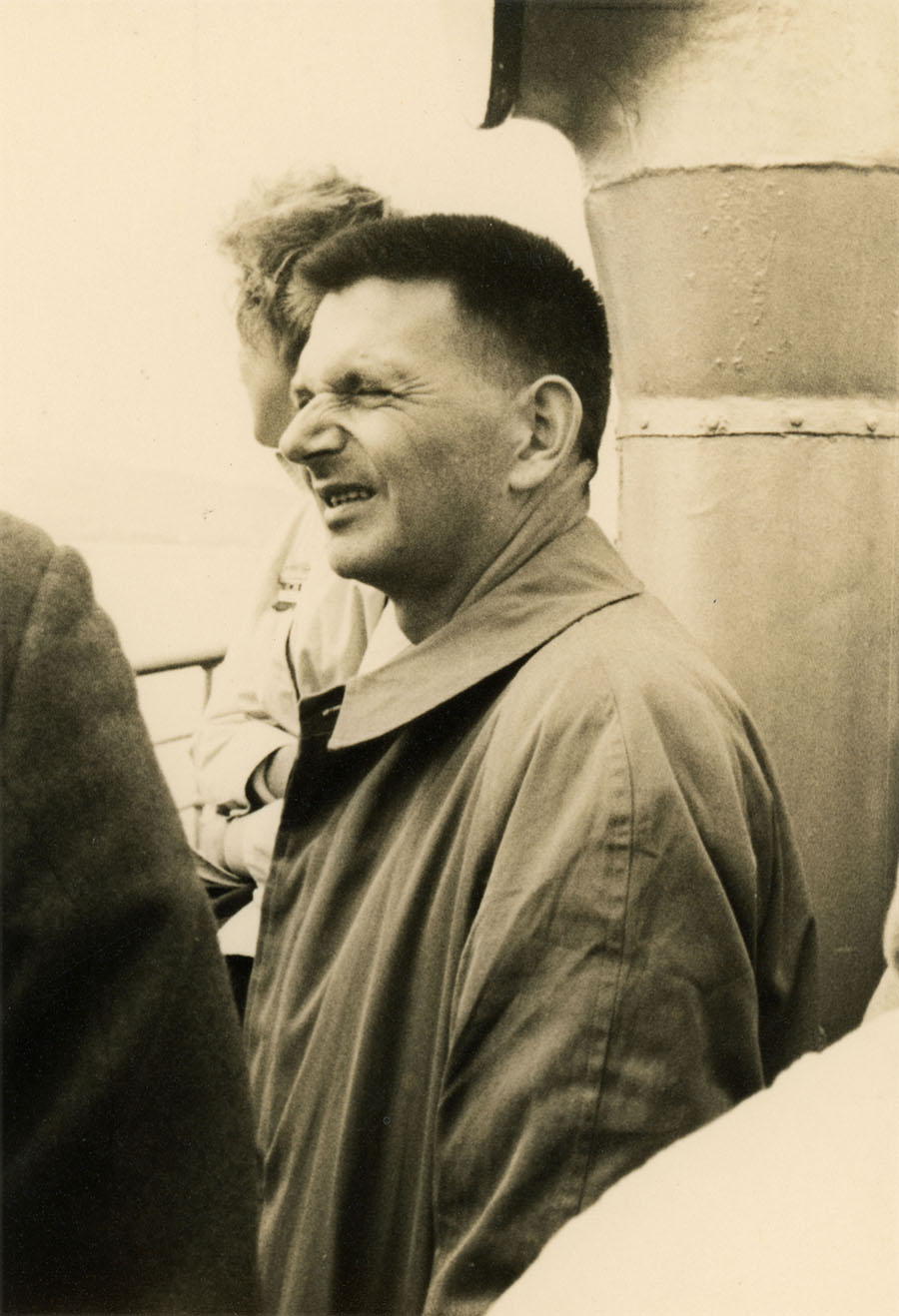
René Thom (1923-2002) was photographed by Halmos in 1958, the year he won the Fields Medal primarily for inventing and developing the theory of cobordism in algebraic topology. Halmos attended the August 1958 International Congress of Mathematicians in Edinburgh, Scotland, where Thom received the Fields Medal, and it is more than likely that this photo was taken there, probably onboard the Queen Elizabeth, the same ship on which Halmos and John Barkley Rosser were photographed that year (see page 45 of this collection). Although it is possible that mathematicians traveled to or from the Congress on the QE, it is perhaps more likely that a tour or cruise onboard the ship was an excursion for conference participants. Thom delivered the address, "Des variétés triangulées aux variétés différentiables," at the 1958 ICM.
Thom earned his Ph.D. in 1951 from the University of Paris with the dissertation “Fibre spaces in spheres and Steenrod squares,” written under Henri Cartan. After working in the U.S. (1951-53) and at the University of Grenoble (1953-54), he joined the faculty at the University of Strasbourg, where he had done much of his doctoral work and where he remained until 1963. After 1958, his work became more general and, from 1964 onward, when he moved to the Institut des Hautes Études Scientifique, it became even more general with his development of catastrophe theory, the field for which he is best known. (Sources: MacTutor Archive, MacTutor Archive: ICM, Mathematics Genealogy Project, IMU Fields Medals 1958)
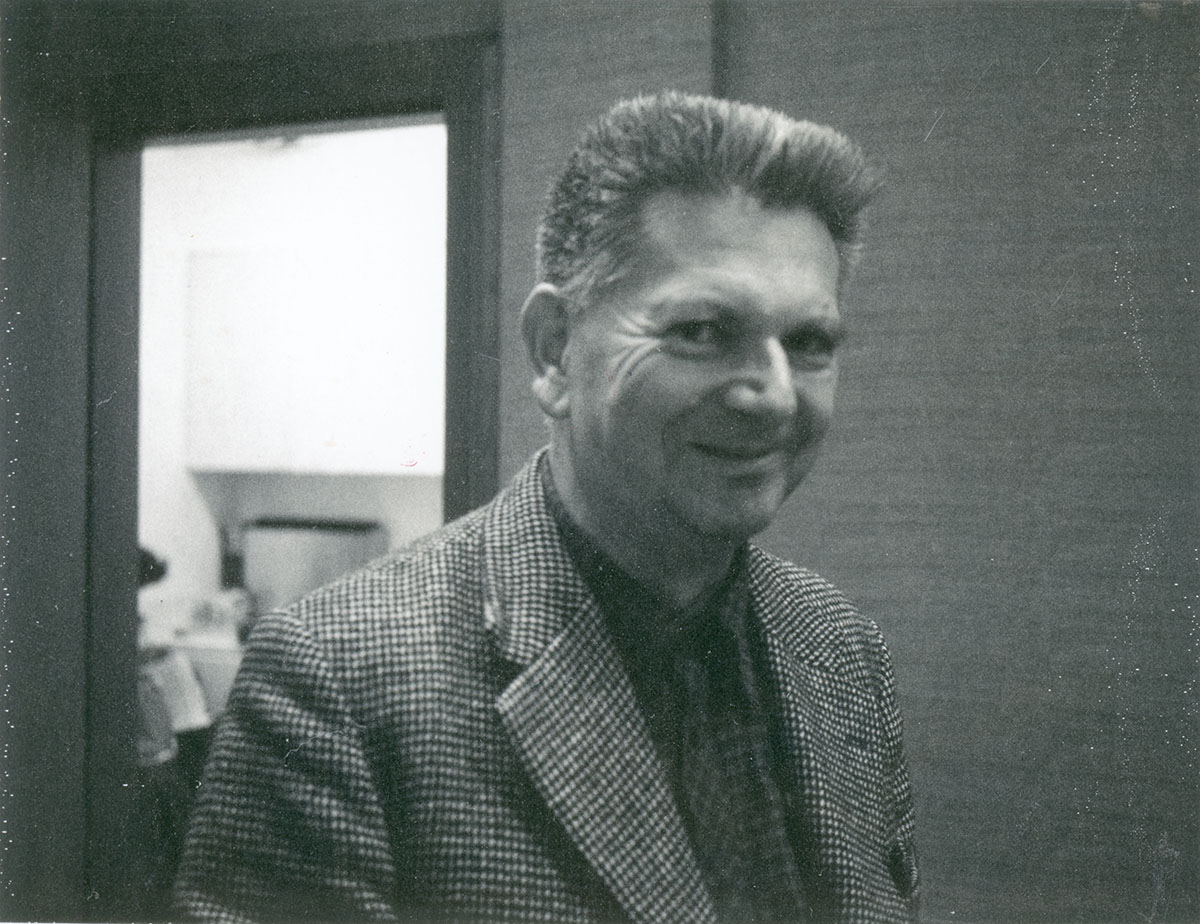
Halmos photographed René Thom again in October of 1979 at a colloquium at Indiana University in Bloomington, where Halmos was a professor at the time.
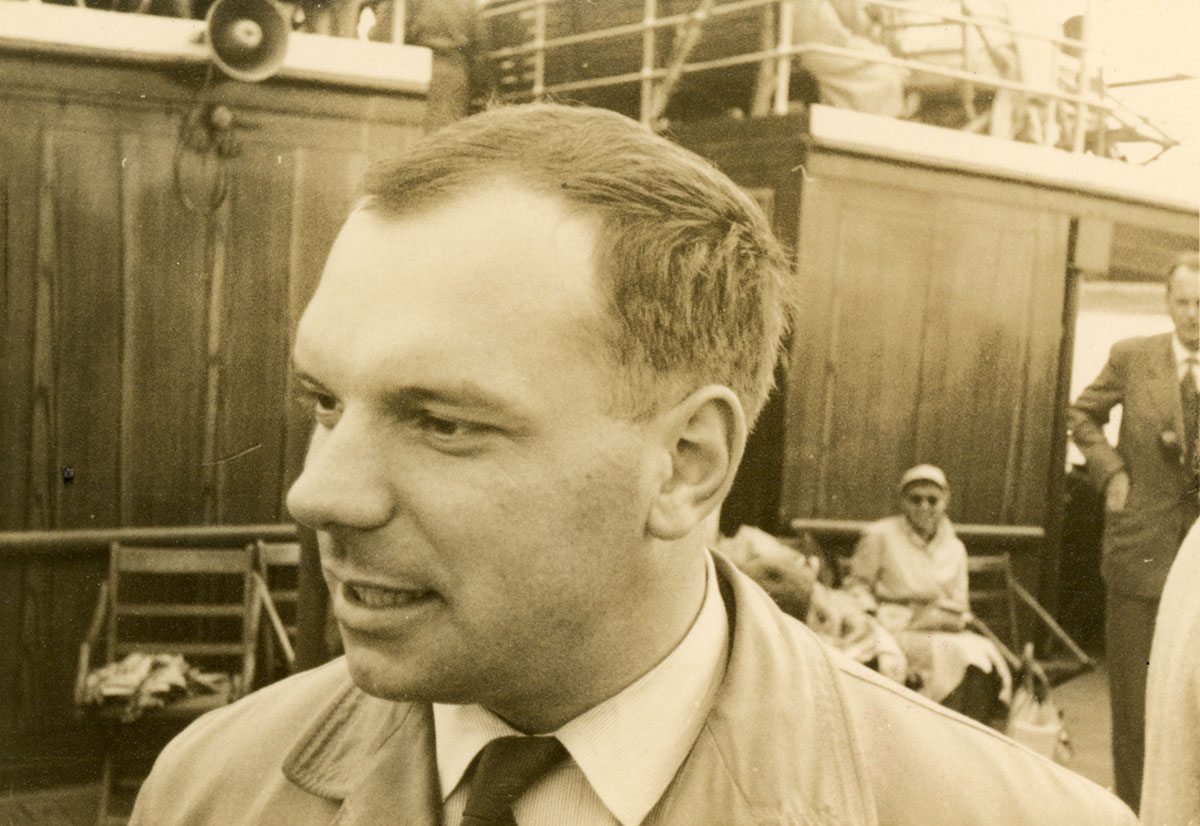
Halmos photographed Jacques Tits in 1958, probably onboard the Queen Elizabeth, the same ship on which he (Halmos) photographed René Thom that year (see above) and on which Halmos was photographed with John Barkley Rosser and his family that year (see page 45 of this collection), and almost certainly in connection with the International Congress of Mathematicians held August 14-21, 1958, in Edinburgh, Scotland.
Born and raised near Brussels, Belgium, Tits earned his Ph.D. in 1950 from the University of Brussels with the dissertation “Généralisation des groupes projectifs basés sur la notion de transitivité.” His early work was on multiply transitive groups. From 1946 to 1956, his research in group theory was funded by the Belgian national scientific agency; from 1956 to 1964 he was on the faculty at the University of Brussels; from 1964 to 1973 he was at the University of Bonn; and from 1973 onward he was Chair of Group Theory at the Collège de France, becoming Professor Emeritus (Professeur honoraire) in 2000. He is best known for inventing and developing building theory, which he first introduced comprehensively in his 1974 book, Buildings of spherical type and finite BN-pairs (1974, reprinted 1986, Springer). Tits and John Thompson were awarded the 2008 Abel Prize for their contributions to group theory. (Sources: MacTutor Archive, MacTutor Archive: ICM, Springer, Abel Prize)
For an introduction to this article and to the Paul R. Halmos Photograph Collection, please see page 1. Watch for a new page featuring six new photographs each week during 2012.
Regarding sources for this page: Information for which a source is not given either appeared on the reverse side of the photograph or was obtained from various sources during 2011-12 by archivist Carol Mead of the Archives of American Mathematics, Dolph Briscoe Center for American History, University of Texas, Austin.
Janet Beery (University of Redlands) and Carol Mead (Archives of American Mathematics, University of Texas, Austin), "Who's That Mathematician? Paul R. Halmos Collection - Page 52," Convergence (June 2013), DOI:10.4169/loci003801




